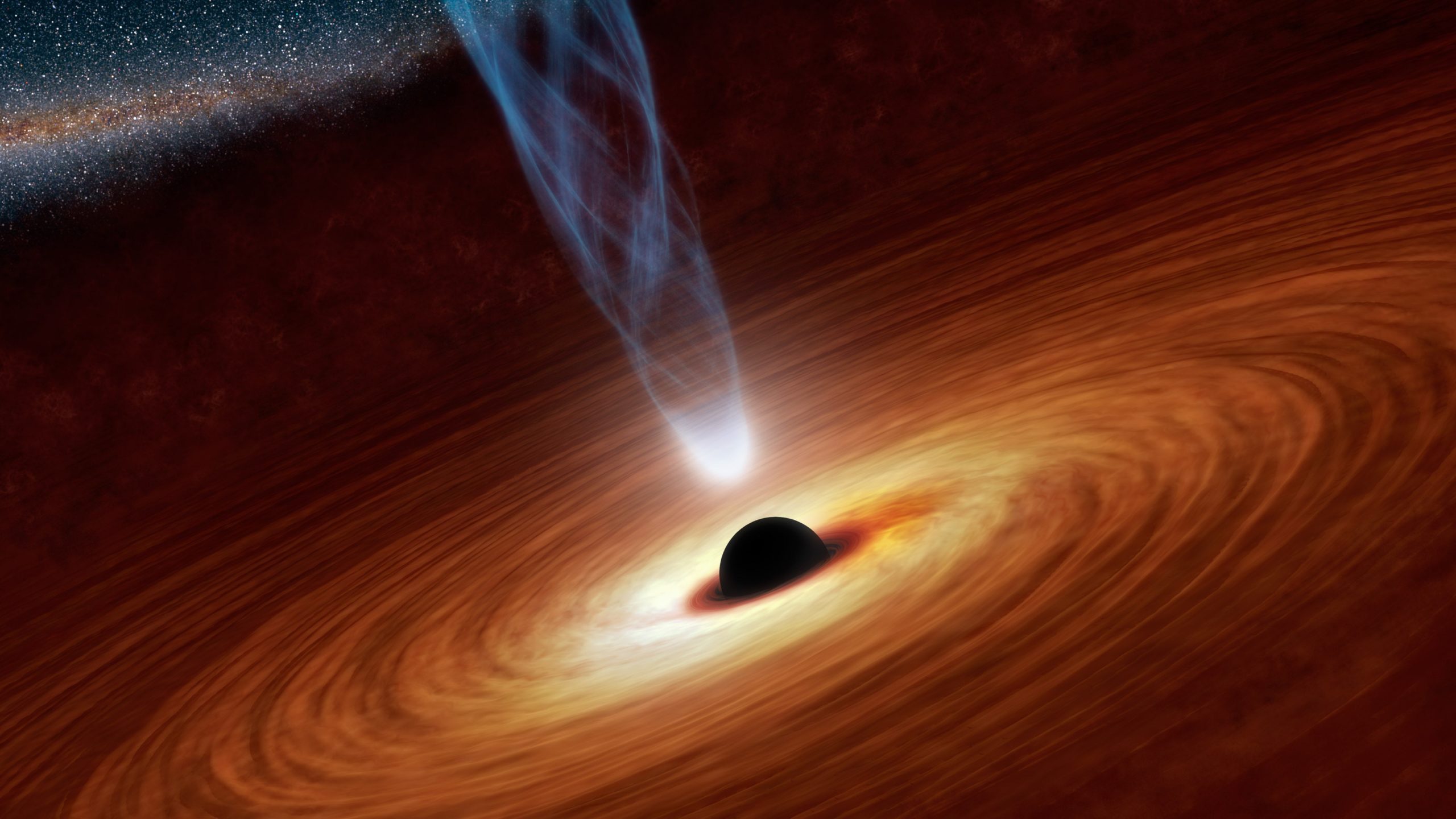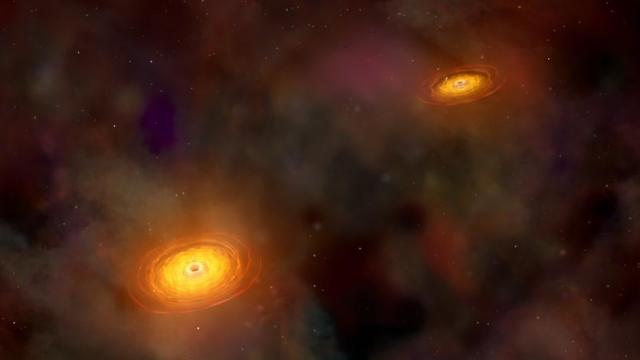In 2015, two black holes were caught merging when the ripples in spacetime they created were detected on Earth. Since then, gravitational wave detectors have found many more of these mergers, broadening our understanding of the most epic collisions known to science. Now, a team of astrophysicists examining data from these detections are proposing that supermassive black holes are actually expanding alongside the universe itself.
The universe is expanding at an accelerating rate, but it’s not that all the stuff is simply getting bigger. Rather, huge masses like galaxies are getting farther away from us (and each other) as the space in between expands. We don’t experience this expansion locally, because gravity holds together our solar system and other collections of matter, but we can see the expansion when we look out into space and notice distant galaxies accelerating away from us (the light we see from them is “red-shifted,” meaning the wavelengths have been stretched out by expanded space). No one knows exactly why the universe is expanding faster and faster, but astrophysicists blame an unexplained something called dark energy.
According to a new research paper, though, the expansion of the universe may actually be making certain objects bigger. Supermassive black holes have masses huge enough and lifetimes long enough to be affected by this expansion, the researchers argue, meaning that, unlike Earth or the Sun or other gravitationally bound objects, black holes noticeably grow alongside the universe. The paper was published last week in the Astrophysical Journal Letters.
The 2015 detection was made by the LIGO — Virgo collaboration, underground experiments that use laser beams and mirrors to catch ripples in spacetime known as gravitational waves. The team behind the new paper looked at black holes like the two objects that caused the 2015 signal.
“In any individual merger, LIGO — Virgo sees something like the last 10 seconds of an exciting trailer for a new series. Our proposed model describes the entire story arc of the full series, placing the clips used to make the trailer into context,” explained Duncan Farrah, an astrophysicist at the University of Hawai’i at Mānoa, in an email.
The team modelled the size of black holes in proportion to the universe’s expansion and found that the black holes would grow as they spiraled toward each other. (This expansion of the black holes would happen even to ones that weren’t spiraling toward one another — it’s just that those are the ones we can see through detections of their gravitational waves.) So too would the black holes at the centres of galaxies expand along with the universe.
Kevin Croker, also an astrophysicist at the University of Hawai’i at Mānoa and a co-author of the paper, told Gizmodo in an email that “We have proposed that the mass of any black hole is proportional to the size of the universe, raised to some exponent. This exponent gives the ‘strength’ of the coupling. In any expanding universe, all black hole masses will grow in this way. If the expansion of the universe is accelerating, the black hole masses will grow faster and faster. So it’s not the acceleration of the expansion that causes the growth, just the expansion itself.”
Typically, black holes are modelled in a universe that doesn’t expand — basically, it’s a momentary measurement that allows astrophysicists to calculate things like a black hole’s mass without having to worry about how the universe’s expansion changes things.

Black holes, which are the densest known objects in the universe and form when huge stars collapse in on themselves, can pull each other together in mergers that take place over very long timescales, sometimes billions of years. Because of how long these mergers take, it means that the size of the universe when the black holes formed was much smaller than the version that exists when the holes actually collide. According to Michael Zevin, an astrophysicist at the University of Chicago, a NASA Hubble Fellow, and a co-author of the paper, the masses involved in any merger would depend on their original sizes upon formation, the shape and size of their orbits, and of course, their age.
This is still very much a hypothesis, but cosmological coupling — meaning properties of a particle or object being linked to properties of the cosmos — does exist elsewhere. Photons, or particles of light, are cosmologically coupled, but in the reverse: While black holes gain energy as they grow, photons lose energy as the universe expands, because their wavelengths become stretched out over time.
What makes this all the more mind-blowing is that the coupling trait wouldn’t be exclusive to black holes and photons. Gregory Tarlé, an astrophysicist at the University of Michigan and a co-author of the paper, told Gizmodo in an email that the matter of more ordinary masses, like your own body or the core of the Sun, would couple very, very weakly with the rate of the universe’s expansion. “It would seem that the effect only becomes observable in the most extreme environments in our universe: black holes and, possibly, neutron stars,” Tarlé said.
For now, this is just an idea, but once a new gravitational wave detector is built, people studying these ripples will be able to locate their origins with much greater specificity and better understand how the collisions went down. New telescopes coming online shortly will be able to image nearly any event within the observable universe, giving astronomers a better look at these phenomena and their effects. Perhaps we’re on the verge of something new.
